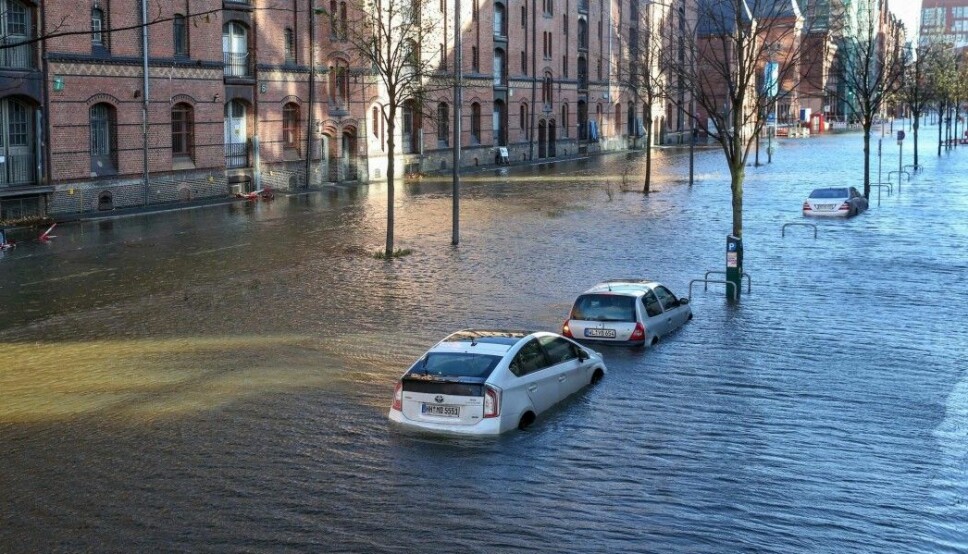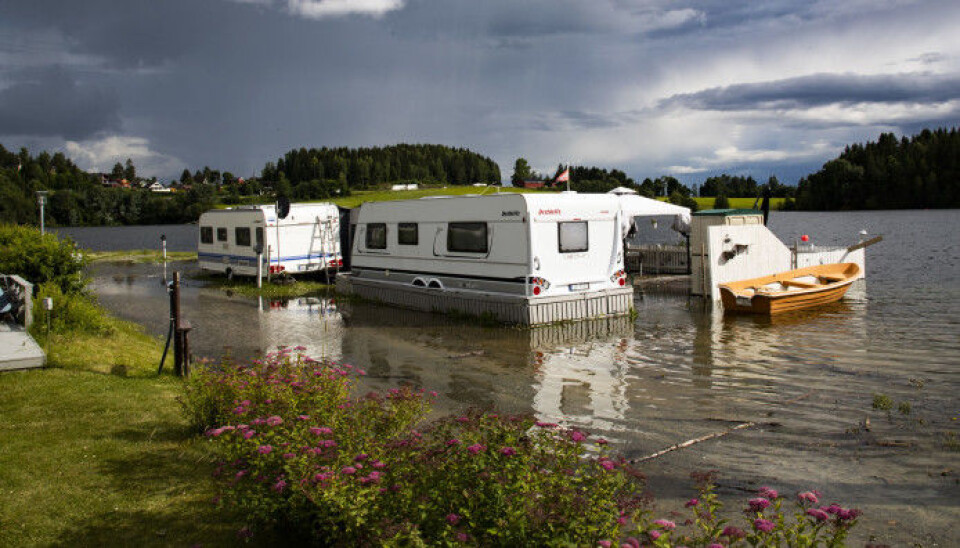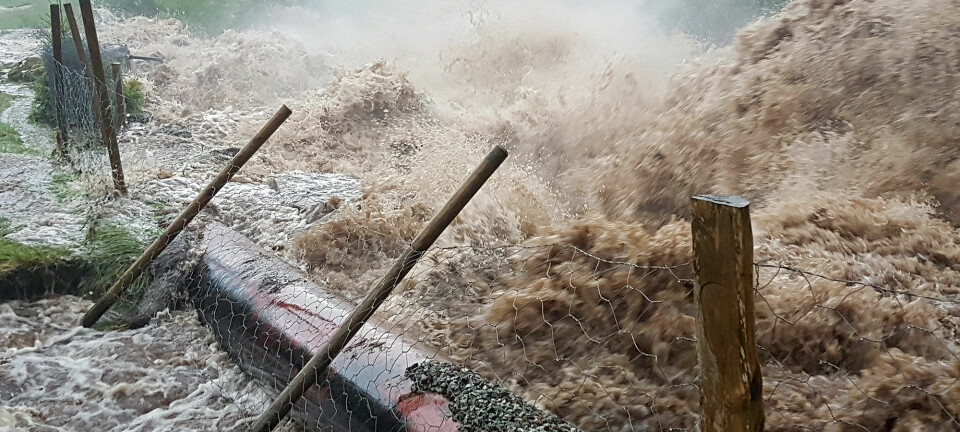
Historic amount of flooding in Europe during the last 30 years
Europe is now experiencing more frequent and greater floods compared to the last 500 years, according to a pan-European study that included Norway.
Researchers from 42 European universities have teamed up to find out more about floods over the past 500 years.
They have studied thousands of historical sources about more than 9,500 floods in 103 waterways in Europe, from Russia in the east to Portugal in the west.
Nine periods stand out as particularly flood-rich. One of them is the present.
The time period with the third most flooding was 1990–2016, and this trend might not have been over when the study was completed.
In the last 30 years, there have been many large-scale floods in Western and Central Europe, after 90 years with little flooding.
“It’s pretty ugly. Major floods in Germany and the United Kingdom have caused billions of kroner in damage. What has happened in Norway is actually small potatoes compared to what has happened elsewhere in Europe,” says Lars Andreas Roald, a retired researcher from the Norwegian Water Resources and Energy Directorate (NVE) who still works with flooding.
More floods in Norway
But floods in Norway also seem to be more frequent and more intense.
“We have had some very flood-rich periods, and there is more flooding in the cities,” says Roald.
He contributed a historical overview of floods in Norway to the pan-European study.
The overview included many of Norway’s large watercourses, such as the Driva, Gaula, Glomma, Numedalslågen, Olden, Orkla, Skienselva, Tinne, Valldøla and Vosso Rivers.
The European study shows that Norway and Sweden had heavy flooding during 1750–1800 and 1910–1940, but Roald has an overview of floods right up to 2014.
Preventing damage
Spring is the high season for flooding in eastern Norway, and spring floods are now coming earlier than before.
“This is because of earlier snowmelt,” Roald says.
“In recent years, we’ve also had several episodes of heavy summer rainstorms. Some of the biggest floods have come as late as July. We also have autumn floods that can be large,” he said.
The main reason why rivers and lakes flood in eastern Norway is no longer because of snow melt, but because the weather is warmer and wetter, NVE has reported.
“Low pressure systems from Europe are reaching us. This causes floods especially in eastern Norway,” Roald says. “And when we get low pressure systems from the Atlantic Ocean, this can cause large autumn floods in western Norway.”
Roald says Norway can prepare for future floods in a variety of ways.
“We have to be careful not to build in places that are obviously dangerous. Gudbrandsdalen (a major valley in central Norway) has almost been under water at times. People can still live there, but we should think a little about where buildings are located. A good deal is being done to reduce the damage. For example, the river bed in Kvam, where the river makes a hard turn, has added protection,” he said.

Climate change can contribute
In Central Europe, the biggest flood season is summer, and the flood season is getting bigger, due in part to rain and melting snow.
Climate change can contribute to flooding, by causing snow to melt earlier than before, for example.
“But we have had other periods before where we have had major flood events, so this is not an absolute. In the 1930s, Norway was struck by floods as large as we have had in recent times. Other periods have had less flooding,” says Roald.
The greatest floods in Europe were between 1750 and 1800.
Previously, there was more flooding during cold periods, but now it is the other way around. Today's flood-rich periods are 1.4 degrees C warmer than flood-poor periods, the study shows.
An EU report predicts more floods as a result of climate change.
The new European study also points to a climate phenomenon called North Atlantic Oscillation (NAO), which is related to air pressure over the Atlantic Ocean. The NAO can contribute to heavy rain, and thus flooding, in Europe.
But more remains to be learned about the role of NAO, temperatures and human-made climate change, wrote Francis Ludlow and Rhonda McGovern from Trinity College Dublin in Ireland in a commentary in the journal Nature. The two researchers did not participate in the study.
Norwegian farmers reported flood damage in the 17th century
It’s not easy to get an overview of past floods.
The researchers behind the European study have cross-checked several historical sources that describe the same flood to better trust their results.
The sources are everything from diaries and private letters to newspaper articles and public documents, as well as measurements of water levels up to landmarks.
In Norway, the oldest flood level is shown on flood rocks in 1670 in Glomma by Elverum.
NVE's flood database dates back to 1827. But there is even older information.
Icelandic sources mention a flood in Gaula in 1345.
And in the Norwegian National Archives are records intended for the king.
“Denmark-Norway had a system for recording floods as early as 1603,” says Roald.
“After a major flood, there were investigations of the flood damage to farms. A group of local farmers led by an official went around and mapped in detail how much production on the farms had decreased after the flood. Based on that, they gave a recommendation to the king in Copenhagen, and the farmers received a reduced tax afterwards,” he said.
This kind of reporting provides reliable information about past floods, he says.
“We don’t have an overview of all floods. But there are good descriptions of the really big floods,” he said.
Translated by: Nancy Bazilchuk
Reference:
Günter Blöschl et al.: Current European flood-rich period exceptional compared with past 500 years. Nature, No. 583, July 22, 2020. Doi: 10.1038 / s41586-020-2478-3. Summary.
———
Read the Norwegian version of this story on forskning.no
































